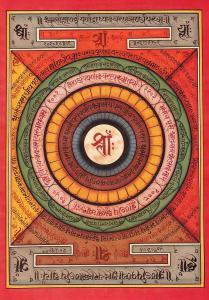
Making sense of Tantra. Buddha’s teachings include sutras and tantras. The sutras present the primary practice themes for gaining liberation from recurring problems and reaching enlightenment. They have methods for developing ethical self-discipline, concentration, love, compassion and an understanding of how things exist. The tantras present advanced practices based on the sutras. Tantra practices serve as a structure for intertwining the sutra themes to weave a tapestry of enlightenment. Moreover, tantra combines physical, verbal, and mental expressions, creating a holistic development path. Because one cannot integrate and practice simultaneously all the sutra themes without previously training in each individually, tantra practice is highly advanced. The root of the word tantra means to stretch or to continue without a break. Emphasising this connotation, the Tibetan scholars translated the term as gyu (rgyud), which means an unbroken continuity.
Download the unpublished manuscript Making Sense of Tantra by Dr. Alexander Berzin here:
 Making sense of Tantra
Making sense of Tantra
What is Tantra in Tibetan Buddhism?
Tantra in Tibetan Buddhism, often referred to as “Vajrayana” (the “Diamond Vehicle” or “Thunderbolt Vehicle”), is a complex and multifaceted system of esoteric teachings and practices designed to rapidly bring practitioners to enlightenment. Here are some key aspects of Tantra in Tibetan Buddhism:
- Deity Yoga: One of the central practices in Tibetan Tantra is deity yoga, where practitioners visualize themselves as a particular deity (or yidam) and try to embody the qualities of that deity. This is not about “becoming” a god but rather about recognizing and manifesting the enlightened qualities that are already inherent within oneself.
- Mandala: Mandalas are intricate diagrams that represent the universe and the enlightened mind. They are used in meditation and ritual to help practitioners connect with the divine and understand the nature of reality.
- Mantra: Mantras are sacred syllables or phrases that are recited as part of meditation and ritual. They are believed to have a transformative power and help the practitioner connect with the energy of a particular deity or enlightened being.
- Empowerments (Initiations): Before one can practice a particular tantra, they usually need to receive an empowerment or initiation from a qualified teacher. This ritual transmission grants the student permission to practice the tantra and connects them to a lineage of practitioners.
- Esoteric Teachings: Tantra often involves teachings that are considered secret or esoteric. These teachings are not “hidden” for the sake of exclusivity but because they are powerful and can be misunderstood or misused if not approached with the right mindset and guidance.
- Integration of Samsara and Nirvana: In Vajrayana, there’s an emphasis on the non-duality of samsara (the cycle of birth and death) and nirvana (enlightenment). Instead of seeing them as two separate realms, tantra teaches that they are two sides of the same coin and that enlightenment can be achieved within this very life.
- Skillful Means: Tantra employs a variety of “skillful means” or upaya, which are methods or techniques tailored to the individual’s capacities and circumstances. This can include practices that might seem unconventional or even antithetical to traditional Buddhist teachings, but they are used because of their efficacy in bringing about realization.
- Guru-Student Relationship: The relationship between the guru (teacher) and the student is of paramount importance in Vajrayana. The guru is seen as a guide who can lead the student to enlightenment, and deep trust and devotion to the guru are emphasized.
- Completion and Generation Stage Practices: These are advanced meditative practices. The generation stage involves visualization of deities and mandalas, while the completion stage involves practices like tummo (inner heat) and phowa (consciousness transference).
- Union of Wisdom and Method: Tantra emphasizes the union of wisdom (understanding of emptiness) and method (compassionate action). This union is often symbolized by the ritual union of male and female deities.
It’s important to note that tantra is not a “shortcut” or an “easy path” to enlightenment. While it’s described as a rapid path, it requires intense dedication, practice, and guidance from a qualified teacher. Misunderstanding or misapplying tantric teachings can lead to confusion or harm, so it’s essential to approach them with respect and caution.


A clear and concise explanation of tantra and sutra.
And thank you for the ebook! A bit complicated though :-)
But thanks.
Respected sir,
i am glad to have these books again without your kind efforts we won’t be able to reached to conclusion based on facts finding evidence that where our historical roots lead us to ascertain our historical and social status of our nation thank you once again.
With best regards,
Safdar Khan
Danmmmm